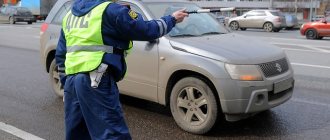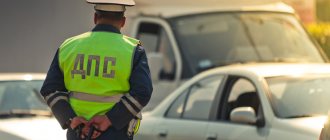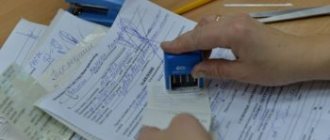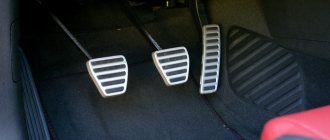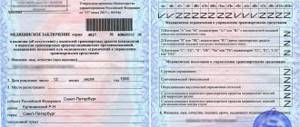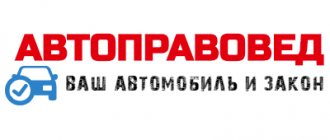On October 20, 2021, the new Administrative Regulations of the Ministry of Internal Affairs come into force. The document replaces the well-known “Order No. 185”.
- About the regulations;
- Photo and video recording of police officers is prohibited;
- Checking documents outside stationary traffic police posts;
- Ambushes are prohibited;
- Return to the car after testing for intoxication;
- Fixation in the area of temporary signs;
- Commercial cameras.
About the regulations
First, let’s find out what this regulation is in the hierarchy of legal acts.
Full title:
“Administrative regulations for the execution by the Ministry of Internal Affairs of the Russian Federation of the state function of implementing federal state supervision over compliance by road users with the requirements of the legislation of the Russian Federation in the field of road safety”
Enter:
“Order of the Ministry of Internal Affairs of the Russian Federation dated August 23, 2017 No. 664”
In the hierarchy of normative acts, this regulation is at the lowest level of federal legal documents. This means that it cannot contain contradictions to the Law “On the Police” and the “Road Rules”. For drivers, the regulations of the Ministry of Internal Affairs (State Traffic Safety Inspectorate) do not contain anything new.
Regulations - Rules governing the order of some activity.
The regulations regulate the work of officials. Officials bear responsibility for failure to comply with the requirements of the regulations to their management.
Violation of the requirements of the regulations by officials is not grounds for failure to comply with the requirements of the Traffic Rules.
What changes have been made in the fight against vehicle conversion?
The new Regulations have strengthened the fight against illegal conversion of vehicles and put half (and even more) of drivers in an unpleasant situation of conflict with the law. Most drivers do not even imagine that they are violators of regulatory legal acts, but there is a list of re-equipment that can lead to negative consequences for the car owner.
All these measures are aimed at improving road safety, because many elements of the vehicle design that are not provided by the manufacturer can limit visibility on the road or otherwise endanger other road users.
Traffic police officers can absolutely rightfully establish a ban on the passage of such a car on public roads and even send the car to a fine parking lot.
Below is an approximate list of changes to vehicle design elements that do not comply with legal requirements:
- installed roof rack. After all, an uncertified homemade trunk may simply not be able to withstand the load, since the maximum load on it is unknown;
- changes in the steering system and a new steering wheel, which may negatively affect the maneuvering characteristics of the car;
- design changes to the suspension and its components;
- passenger and driver seats are shaped differently than those provided for this car model;
- monitors broadcasting advertisements;
- xenon elements in lighting;
- kenguryatniks of any shape;
- non-standard design for wheel rims to increase ground clearance, which may result in the vehicle tipping over;
- any changes in headlights and other lighting: installation of additional lighting equipment, replacement of lamps with lamps with a non-standard color
- wheel arches of a new shape;
- placement of a non-certified light box (light box) on the roof of a car, etc.
Having studied this list, we can come to the conclusion that all elements that are not included in the factory equipment of the car are classified as illegal tuning of the vehicle.
IMPORTANT !!! However, if the procedure is followed, it is possible to convert the car. Any of the above changes must first be subjected to examination in accredited centers.
If the expert makes an opinion on the safety of such structural and other types of modifications to the car, then you can move on to the next step - registering such changes with the traffic police. The Technical Regulations of the Customs Union, adopted back in 2011, on December 9, No. 877, are dedicated to vehicle safety.
Photo and video recording of police officers is prohibited
- This is the main myth
, which spread on the basis of the exclusion of the following lines from the regulations:
25. An employee must not interfere with the use of video and sound recording equipment by a road user, unless prohibited by law. The employee must inform the road user making the recording about the existence of the prohibition.
Only an exception, no clauses for the ban were added and could not be added, since the ban on photo and video recording contradicts the principle of publicity and openness established by the Law “On the Police”.
What are the rights and obligations of traffic police officers?
According to the new order, paragraph 6, the traffic police inspector on the road has every right to:
- demand that drivers and passengers stop violating if they start doing so;
- stop cars for established reasons;
- check the driver’s documents, in accordance with the traffic rules, paragraph 2.1.1, as well as the passports of drivers, passengers and pedestrians;
- call citizens to the police in the prescribed manner if they have received statements of violation (hello, “people’s inspector” and the like), but ordinary traffic police officers cannot organize the arrest of violators in case of failure to appear - this is done by the district police officer; the procedure for calling citizens to the police provides only a written request, and not calls by phone or SMS;
- request almost any information from the media, organizations, institutions, etc., including personal data of citizens;
- demand to leave the scenes of crimes or violations in established cases (introduction of a special regime);
- draw up protocols and issue decisions to citizen drivers;
- apply enforcement measures in case of violations, such as evacuation, cancellation of registration (in registration departments), etc.;
- deliver drivers, pedestrians and passengers to the departments of the traffic police and the Ministry of Internal Affairs if they are wanted, they are in danger and in other cases, if there are motivated reasons for this;
- direct and deliver drivers to medical institutions for examination for intoxication, as well as conduct an examination for alcohol on the spot;
- carry out all types of searches and inspections;
- conduct video recording of procedural actions and all procedures;
- use established databases (fines database, search database, etc.);
- use citizens' cars (and drivers are required to provide their cars at his request, but only if the inspector has grounds, more on this below).
The new Order also introduces many responsibilities. They are also regulated by the administrative regulations of the State Traffic Safety Inspectorate, Order 664 of the Ministry of Internal Affairs of the Russian Federation of 2021 in its paragraph 7:
- know the Constitution of the Russian Federation, the rights of citizens, laws relating to himself and strictly observe all this;
- arrive at the scene of a crime or offense at the first call;
- document procedural actions if required by law;
- provide first aid to victims of road accidents and other accidents;
- ensure security and stop any violations;
- eliminate conditions that pose a threat to road safety, including, if within their power, removing obstacles from the road;
- participate in the search for violators;
- take away documents if they are suspected of being falsified.
Checking documents outside stationary traffic police posts
A stop to check documents, according to the new Administrative Regulations of the Ministry of Internal Affairs, can be carried out at any post
. The requirement to stop a vehicle in order to check documents has been eliminated, or rather stated in a more understandable form.
63. The grounds for stopping a vehicle by an employee are:
verification of documents for the right to use and drive a vehicle, documents for the vehicle and the cargo being transported, as well as documents proving the identity of the driver and passengers (only at stationary traffic police posts).
84. The grounds for an employee to demand that the driver stop a vehicle are:
84.13. Checking documents for the right to use and drive a vehicle, documents for the vehicle and the cargo being transported.
84.14. Checking the identity documents of the driver and passengers, if there is data giving grounds to suspect them of committing a crime or to believe that they are wanted, or if there is a reason to initiate an administrative offense case against these citizens, as well as if there are grounds for their detention in cases provided for by federal law.
The change will save a lot of time for both drivers and traffic police officers. With the development of the availability of video content, many “well-read” drivers believed that the requirement to hand over documents in the event of a stop in violation of the regulations was not legal. The result was a conflict that led to the driver being detained.
Here is a video with an example of how you can distract traffic police inspectors from work for 30 minutes.
Don't try again. In this video, such loyal actions of employees are incomprehensible. There were every reason to hold the driver accountable for failure to comply with legal requirements.
Once again, the driver is obliged to comply with the lawful requests of the police officers. The main “law” for the driver is the Rules of the Road. Regulations of the Ministry of Internal Affairs (State Traffic Safety Inspectorate) - for the police. Violation of regulations is not a reason not to comply with legal requirements.
There is an opinion: “Not according to the regulations - not according to the law” - it is not true
. To confirm, try to find a case where failure to comply with the regulations somehow significantly influenced the outcome of the consideration.
At its core, the Ministry of Internal Affairs regulations for the driver are a guide to traffic legislation. It fully complies with federal laws and the driver does not need to delve into all the regulatory documents, but simply find a link to the required article of the law from the regulations.
For those who still want to communicate with the inspector, regarding stopping to check documents, the regulations also have a section “Grounds for checking documents.”
106. The grounds for checking documents required for participation in road traffic * (96) are:
The driver has virtually no chance here. It is worth noting that the inspector is not required to provide any orientation, action plans, or other documents other than an official identification card.
What changes have been made by the new Regulations to the procedure for photo and video recording?
The Regulations include a clause stating that traffic police officers have the right to confiscate technical equipment, as well as memory cards and other media for photo, audio and video information. This is due to the fact that a video recorder installed in a car may “testify” not in favor of its owner. For example, if a car owner allowed himself to pass through a prohibitory traffic light, which in almost one hundred percent of cases will be recorded by this technical means. This creates great convenience for traffic police officers.
In the example given in the previous paragraph, the memory card will most likely be removed. If it is difficult to remove it, for example, if the device is damaged, or the memory is built-in, then the entire device will be confiscated.
In general, the new Regulations increase the role of various technical devices through which sound and image can be recorded. In particular, the traffic police inspector does not have the right to establish a ban on removing it when drawing up a protocol on an administrative offense and other procedural actions. When a traffic police officer insists on stopping filming without sufficient regulatory grounds for this, he himself may be brought to administrative responsibility for exceeding official authority, i.e. arbitrariness. There are exceptions to this rule. You cannot take photographs or videotape sensitive objects; in this case, you may lose not only the memory card, but also the device itself.
ATTENTION !!! According to the new rules, the activities of traffic police inspectors must generally take place within the visibility range of special video cameras. This is provided for anti-corruption purposes. But there is also an indication “if possible” in this paragraph of the Regulations. That is, you can always explain that there was no opportunity to work within the “field of view” of the video camera.
The mandatory presence of witnesses is no longer always required. They are being replaced by more “objective” video cameras. There are no GOST standards for the technical features of these devices, even for the resolution of the video camera.
To record violations, not only stationary video recording equipment is now used, but also portable ones. The main requirement is the availability of documents on metrological verification and a certificate of the measuring instrument.
Ambushes are prohibited
Yes, there is such a section, but with a few exceptions
63. When supervising traffic using a patrol car with a special color scheme
, its placement in a stationary position must be carried out in such a way that it is clearly visible to road users and there is the possibility of timely suppression of an offense.
In order to ensure traffic supervision on emergency sections of the road, as well as in cases of traffic supervision using photo and video recording of violations of traffic rules, a patrol car can be placed in places with visibility limited by natural breaks in the terrain, turns roads, as well as elements of the road network.
Actions by employees that involve deliberately interfering with the recognition by road users of a special color scheme or devices for producing special sound and light signals of a patrol car are not permitted.
Pay attention to the highlighted fragment again. Next, look at the next section of the regulations.
64. When supervising traffic by a squad of employees in a patrol car without a special color scheme
measures are being taken to record violations of traffic rules that contribute to the commission of road accidents, including facts of dangerous driving, driving in violation of traffic rules into a lane intended for oncoming traffic, exceeding the established speed, violations of the rules for passing pedestrian crossings, rules for using a telephone by the driver of a vehicle facilities. At the same time, its interaction with other squads is ensured (stationary, pedestrian posts, squads on patrol cars with a special color scheme), which, if necessary, stops the vehicle and registers an administrative offense.
So any neighboring car in traffic or in a parking lot may find itself with police officers monitoring compliance with the requirements of the Rules.
In addition, quadropters can be used to record violations.
unmanned aerial vehicles) can be used for traffic control
and others).
To record traffic violations, you can use a quadcopter.
Next, we will briefly consider other innovations in the regulations.
What changes have affected OSAGO?
The new regulations “put” an electronic compulsory motor third party liability insurance policy on the same level as a regular paper document. The procedure for checking both types of MTPL policies using the database is completely identical.
Also, the traffic police now goes to the scene only in case of major accidents with a large number of vehicles and when harm is caused to health.
Insurers are now required to accept the following documents instead of a traffic accident certificate:
- resolution on bringing to administrative liability;
- ruling on refusal to initiate proceedings regarding an administrative offense;
- protocol on recording the circumstances of the accident, etc.
Return to the car after testing for intoxication
233. If the examination for intoxication is carried out at the nearest stationary post
, in another premises of the internal affairs body, if the result of the examination for intoxication is negative and there are no grounds for sending for a medical examination for intoxication, the person is transported to the place of removal from driving a vehicle or to the location of his vehicle.
In the previous version, the requirement to return the driver was only during a medical examination, that is, to the medical center. institution.
What changes will affect the state inspection itself?
The regulations of the state inspection laid the foundation for the abolition of the traffic police as a separate department. This process is expected to be gradual, with the gradual transfer of government functions to various services and even private structures. First of all, this concerns the registration of an accident under the Euro protocol, when the traffic police officer simply does not attend and the participants in the accident simply fill out a notice for the insurance company.
Licensed companies can carry out technical inspection of cars and their towing.
ATTENTION !!! And even the issuance and subsequent replacement of a driver’s license for the right to drive a vehicle, which was previously the exclusive prerogative of the traffic police, is now available at the Public Service Centers (MFC).
Subsequently, the inspection may be completely abolished, and its functions will be performed by the patrol service. The crew of the patrol car will include an employee who is competent in drawing up protocols on administrative offenses, as well as other issues requiring legal knowledge and practical skills.
Such a tough solution to the issue is due to the high degree of corruption of the entire structure of the traffic police. At the same time, the basis for carrying out the reform is the positive experience of the Russian Federation’s “neighbor” – Kazakhstan.
What rights do drivers, pedestrians and passengers have?
But there are also the rights of ordinary citizens, which are also listed by the new Order of the Ministry of Internal Affairs 664 of October 20, 2021 and instructs traffic police officers to protect and respect these rights:
- appeal the actions of employees;
- receive compensation for violated rights and other losses in case of illegal punishments;
- not to testify against yourself and your immediate family (however, this is the right given to us by the Constitution);
- not to testify or testify if the inspector speaks to them in a language other than their native language (and it does not have to be Russian), or to resort to the services of translators;
- enjoy all the rights that are given by any other legal acts (including traffic rules).
About video shooting by the inspector and the driver
The requirements for mandatory video or audio recording by an inspector of his procedural actions, as well as the implementation of such by a driver when stopped by a traffic police officer, are also regulated. Such requirements, as well as rights and responsibilities, include:
- all administrative procedures of the traffic police, if possible, must be carried out in the background of video recording from a patrol car or portable recorder;
- all received video recordings must be attached to the case materials in writing;
- the inspector can use the video recording function instead of the participation of witnesses during procedural actions, where this is mandatory.
The driver is allowed to remove the traffic police inspector. Despite the fact that there is no direct permission in the new Order 664, other Federal laws that speak about the openness and publicity of the activities of government agencies give the driver such a right.
